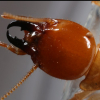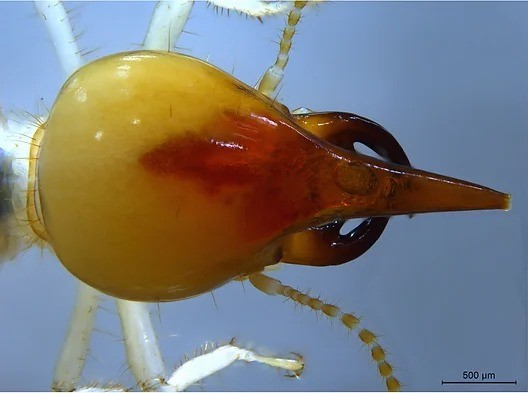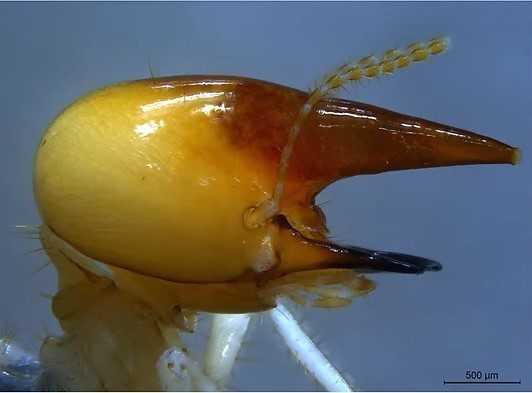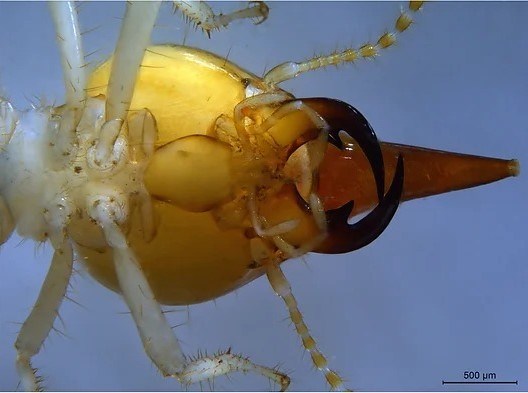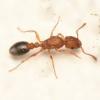Here we have a few shots by Dr. Rudolf Scheffrahn of an alcohol-preserved soldier of Mapinguaritermes grandidens from the University of Florida Termite Collection (UFTC).
Mapinguaritermes is a genus of Amazonian Syntermitinae erected to contain two species (M. grandidens and M. peruanus) that were separed in 2012 from Armitermes follwoing a taxonomic revision.
Their soldiers are quite impressive thanks to the huge curved mandibles designed to pierce and hold and long nasus from which a defensive secretion is exuded, but one of the most notable "fun facts" about this genus its the name itself: they are in fact named after the Mapinguari, a creature that sway between legend and cryptozoology: while it is traditionally depicted as an impossible bipedal, hairy, one-eyed, belly-mouthed creature in Brazilian folklore, some (including field researchers like ornithologist David Oren) argue that the root of its leged lies in the late or even current survival of some species of giant ground sloths (no less). While (unsurprisingly) no solid proof of the existence of this creature in either of its "incarnations" has ever been found, we can say that since 2012 the Mapinguari do exist in a sense... it's just much smaller than expected!
Dorsal wiew.
Lateral wiew.
Ventral wiew.


